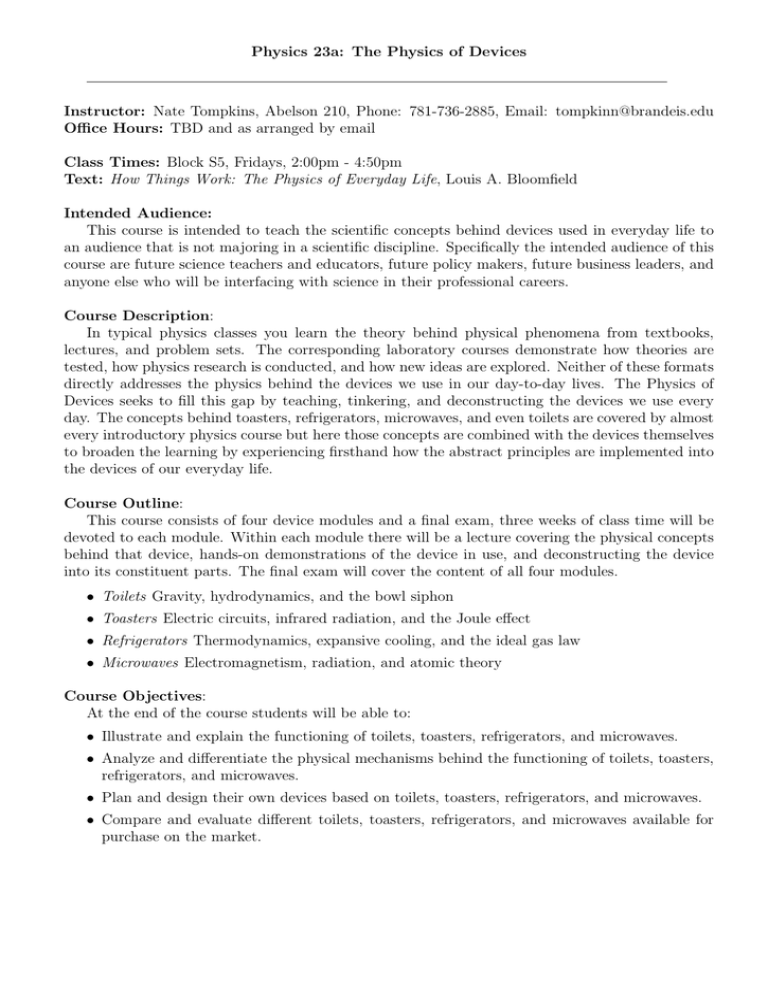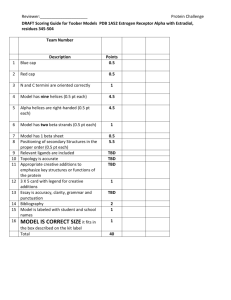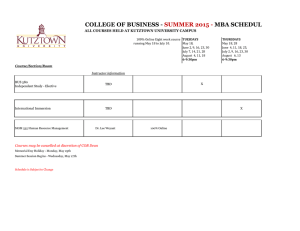Physics 23a: The Physics of Devices
advertisement

Physics 23a: The Physics of Devices Instructor: Nate Tompkins, Abelson 210, Phone: 781-736-2885, Email: tompkinn@brandeis.edu Office Hours: TBD and as arranged by email Class Times: Block S5, Fridays, 2:00pm - 4:50pm Text: How Things Work: The Physics of Everyday Life, Louis A. Bloomfield Intended Audience: This course is intended to teach the scientific concepts behind devices used in everyday life to an audience that is not majoring in a scientific discipline. Specifically the intended audience of this course are future science teachers and educators, future policy makers, future business leaders, and anyone else who will be interfacing with science in their professional careers. Course Description: In typical physics classes you learn the theory behind physical phenomena from textbooks, lectures, and problem sets. The corresponding laboratory courses demonstrate how theories are tested, how physics research is conducted, and how new ideas are explored. Neither of these formats directly addresses the physics behind the devices we use in our day-to-day lives. The Physics of Devices seeks to fill this gap by teaching, tinkering, and deconstructing the devices we use every day. The concepts behind toasters, refrigerators, microwaves, and even toilets are covered by almost every introductory physics course but here those concepts are combined with the devices themselves to broaden the learning by experiencing firsthand how the abstract principles are implemented into the devices of our everyday life. Course Outline: This course consists of four device modules and a final exam, three weeks of class time will be devoted to each module. Within each module there will be a lecture covering the physical concepts behind that device, hands-on demonstrations of the device in use, and deconstructing the device into its constituent parts. The final exam will cover the content of all four modules. • Toilets Gravity, hydrodynamics, and the bowl siphon • Toasters Electric circuits, infrared radiation, and the Joule effect • Refrigerators Thermodynamics, expansive cooling, and the ideal gas law • Microwaves Electromagnetism, radiation, and atomic theory Course Objectives: At the end of the course students will be able to: • Illustrate and explain the functioning of toilets, toasters, refrigerators, and microwaves. • Analyze and differentiate the physical mechanisms behind the functioning of toilets, toasters, refrigerators, and microwaves. • Plan and design their own devices based on toilets, toasters, refrigerators, and microwaves. • Compare and evaluate different toilets, toasters, refrigerators, and microwaves available for purchase on the market. Homework: At the end of each module all students will be expected to submit a report explaining the functioning of the topical devices constituent parts and how they come together to produce the desired functionality. Reading: There will be assigned reading to be completed before each module. Completion of the reading will be evident by the submission of a brief report describing the desired functions of the device, the concepts behind its functionality, and the history behind its creation/discovery. Course Schedule: The course schedule is subject Week One Week Two Week Three Week Four Week Five Week Six Week Seven Week Eight Week Nine Week Ten Week Eleven Week Twelve to change but is initially planned Toilets: Theory Toilets: Hands-On Toilets: Deconstruction Toasters: Theory Toasters: Hands-On Toasters: Deconstruction Refrigerators: Theory Refrigerators: Hands-On Refrigerators: Deconstruction Microwaves: Theory Microwaves: Hands-On Microwaves: Deconstruction as follows: Pages TBD Pages TBD Pages TBD Pages TBD Pages TBD Pages TBD Pages TBD Pages TBD Pages TBD Pages TBD Pages TBD Pages TBD Grading: The final grade from the course will be calculated based on participation, reading summary completion, module reports, and the final exam. Schematically this works out as: Participation . . . . . . . . . . . . . . . . . . . . . . . . . . . . . . . . . . . . . . . . . . . . .10% Reading Summaries . . . . . . . . . . . . . . . . . . . . . . . . . . . . . . . . . . . . . . 20% Module Reports . . . . . . . . . . . . . . . . . . . . . . . . . . . . . . . . . . . . . . . . . 40% Final . . . . . . . . . . . . . . . . . . . . . . . . . . . . . . . . . . . . . . . . . . . . . . . . . . . . 30% Disclaimers: • If you are a student with a documented disability on record at Brandeis University and wish to have a reasonable accommodation made for you in this class, please see me immediately. • You are expected to be familiar with and to follow the University’s policies on academic integrity (see http://www.brandeis.edu/studentlife/sdc/ai ). Faculty may refer any suspected instances of alleged dishonesty to the Office of Student Development and Conduct. Instances of academic dishonesty may result in sanctions including but not limited to, failing grades being issued, educational programs, and other consequences. • Use of laptops during class for note-taking or web research related to the course can be helpful to learning. You are expected to be respectful of how your behavior may be distracting to others. Students whose behavior is distracting will be asked to put away the offending devices. • Students needing help with the material are encouraged to engage with the other students in the class and contact the instructor.


